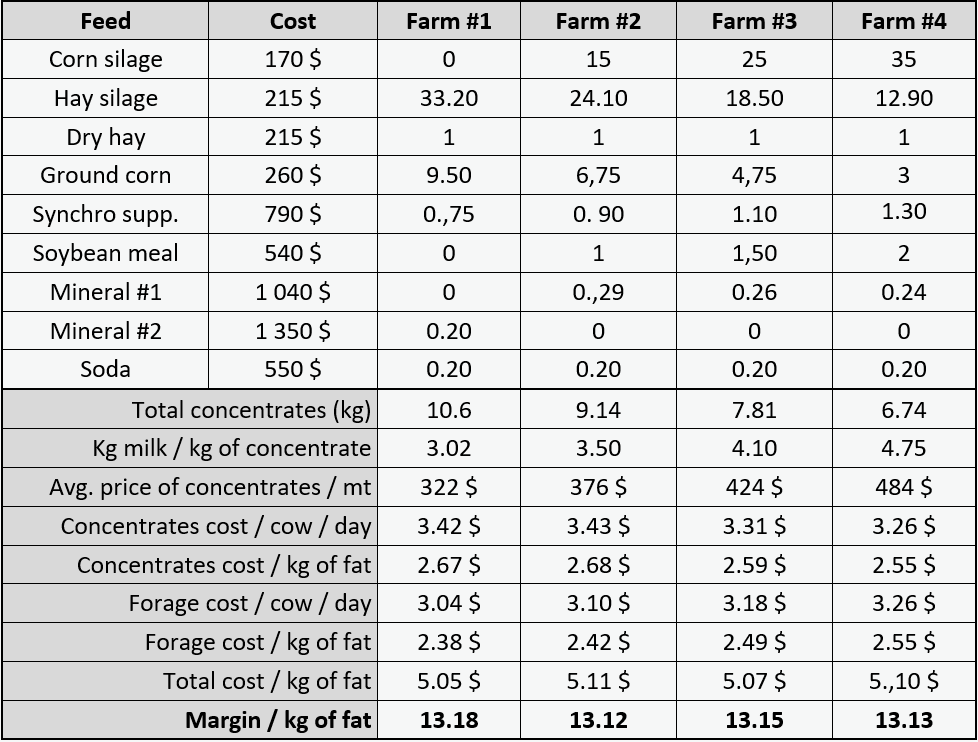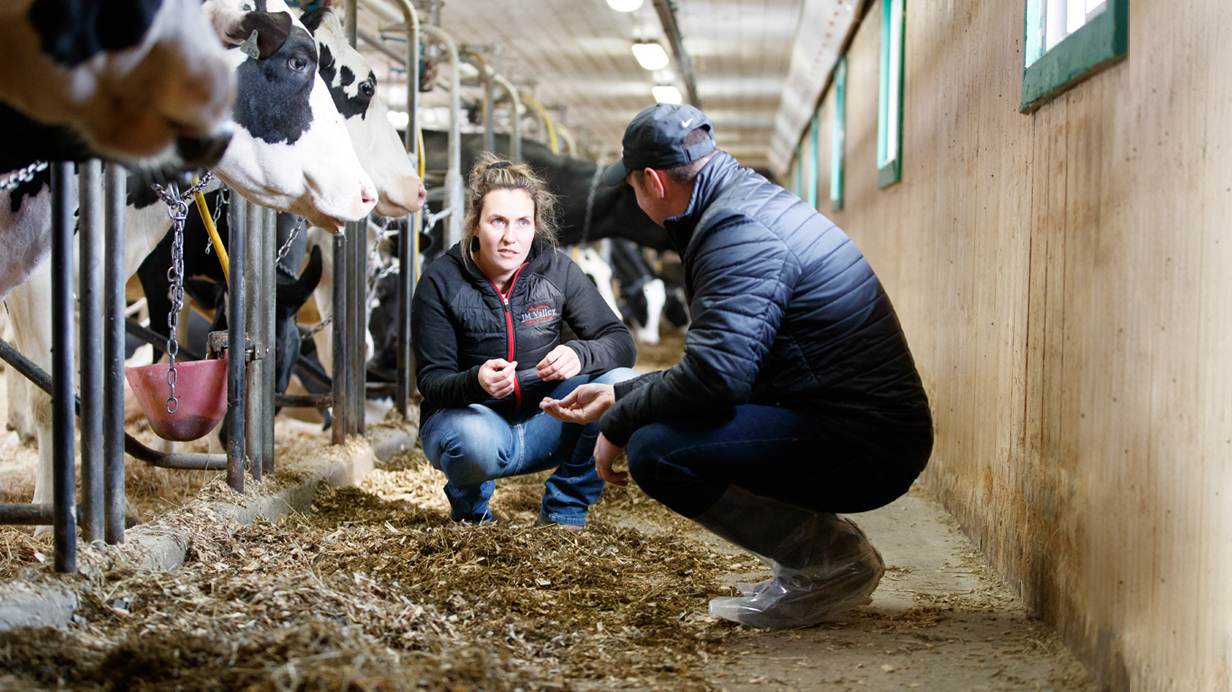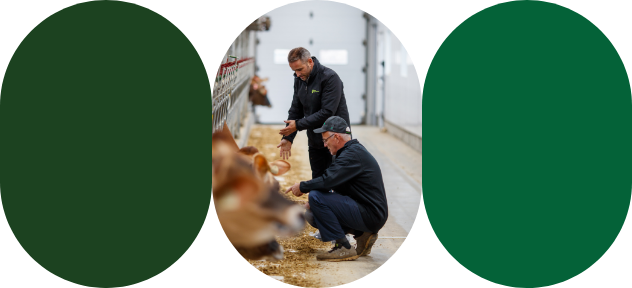The limitations of feed margin measurement indicators
Feed costs are a major expense on a dairy farm, so it’s normal to monitor them closely. However, due to the limitations of certain indicators, care must be taken in their interpretation if feed costs are to be properly measured.
Different indicators, different results
The table below shows four farms with margins/kg in the top group, all delivering an average of 32 litres/cow, at 4% fat and 3.2% protein, and with the same cost/MT of forage and concentrates. We can see that these two indicators (kg milk/kg concentrate ratio and average concentrate cost/MT) give us very different results because of the amount of corn silage in the rations, which ranges from 0 to 35 kg. Note that the four rations presented have comparable nutrient intakes.
Comparable rations depending on the quantity of corn silage (0 to 35 kg)

The table shows that feed costs can be measured from all angles, but the values of some indicators can vary widely from farm to farm for the same feed margin.
When using any of the indicators to make decisions, it’s important to remember that they have their limitations in terms of interpretation and comparison with others.
Kg milk/kg concentrate ratio
The kg milk/kg concentrate ratio, which ranges from 3.02 to 4.75, cannot be used to compare the farms. Why? Because we know that the more corn silage (which contains grain) in the ration, the less concentrates need to be added. The ratio is therefore 4.75:1 on Farm #4 and 3.02:1 on Farm #1. This difference is significant but does not affect the margin/kg of fat, which is about the same for all four farms.
As such, this indicator cannot be used to compare the farms because, as mentioned above, the rations do not contain the same amounts of corn silage. The ratio is not a measure of profitability, but rather an indicator of the type and quality of the forage provided.
If the margin/kg of fat is below expectations or targets, you need to look further to see if the problem is the revenue/kg, due to the milk components, or if the problem is that the cost/kg is too high, and then identify where it is coming from.
Average concentrate cost/MT
Let’s see if the average concentrate cost/MT is a reliable indicator. We can see that Farm #1 has an average concentrate cost of $322/MT, while Farm #4 has an average concentrate cost of $484/MT. The difference is $162/MT, yet these two farms have the same margin.
So, this indicator cannot be used to compare farms and draw conclusions. The two farms do not buy the same items to complete their forage rations. Farm #1 needs mainly energy, i.e., grain corn, while Farm #4, which uses a great deal of corn silage, needs protein. Farm #4 will still need to supplement its ration with concentrates, which are more expensive per tonne, but it will need fewer tonnes.
Note that these farms all pay the same price/MT for their inputs, but their average concentrate cost/MT is very different.
The point of the above example is to show you that comparing kg milk/kg concentrate ratios or average concentrate costs/MT that have very different values can distort your decision making.
How to accurately measure feed margins
Since 2012, with the monthly table and now AgConnexion │ Lactascan, Sollio Agriculture uses the margin/kg to measure feed margins. The formula to remember is to take the kilos of fat from the quota obtained and multiply this figure by the best possible margin/kg. The other data are indicators that can help you find out why the revenue/kg or cost/kg is higher or lower than expected.
The margin/kg herd is strongly influenced by productivity. Farms with 1.20, 1.35 or 1.50 kg of fat delivered/cow may have the same feed margin/kg for lactating cows, but they end up with very different herd margins after feeding replacement cows.
For example, delivering 100 kg of fat with cows at 1.20 kg/day instead of 1.50 kg/day will require 25% more cows, not including the associated costs. In addition, the higher requirements (land, buildings, labour) for the replacement cows can be very expensive and are not included in the feed costs for lactating cows. So the kg of fat delivered/cow must be part of the equation.
As for the forage prices, we used standardized prices to compare them. However, if we were to use actual prices, in many cases we would adopt a strategy to reduce the forage cost/kg of fat delivered. You can obtain your feed margin report via AgConnexion │ Lactascan or a daily overview. Ask your agri-advisor about this.
Source: This article was originally published in French in the March 2021 issue of Coopérateur magazine.



